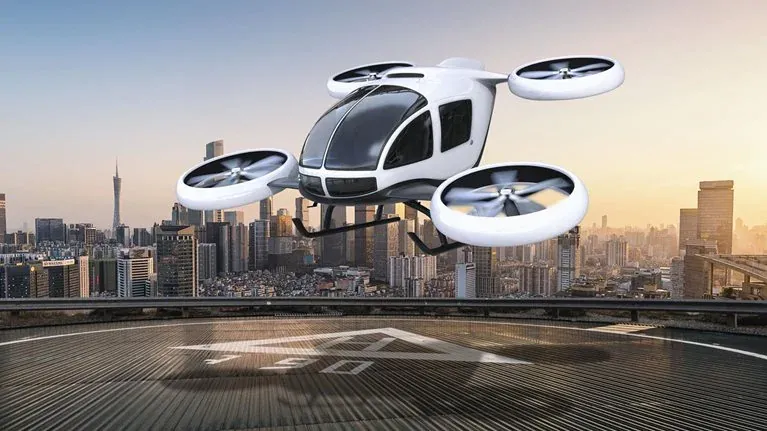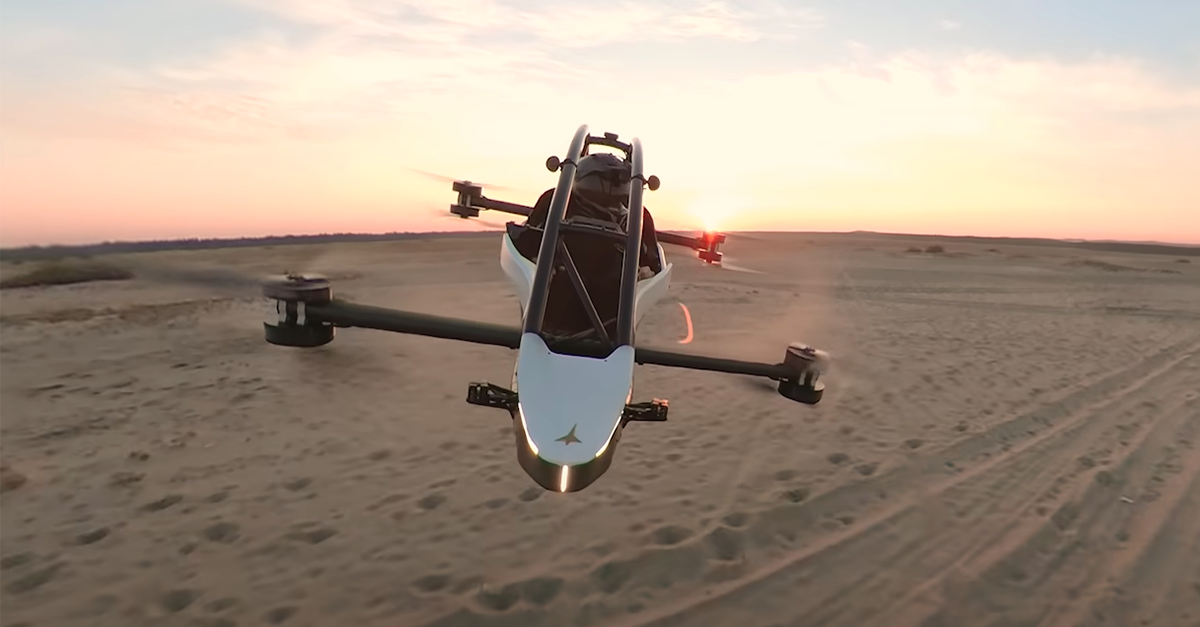The Rise of Personal Flying Vehicles: A New Era in Aviation

Being an aviation follower since kid and contributing as a writer gave me the opportunity to witness personal flying vehicles development over the last few decades flying cars era has come to pass and me for one is delighted to announce that it is not the years that we have been waiting. But this amazing progress brings up its own legal and even technical difficulties.

The Dawn of Electric Vertical Takeoff and Landing Vehicles (EVTOLs)
Electric Vertical Takeoff and Landing (EVTOL) vehicles stand as a breakthrough in the world of private aviation. These are aircraft that lift off and descend like helicopters, but they have power by electric propulsion for flying. This type of technology can potentially change the urban mobility landscape in a way that has never been possible before.
Being one of the pioneers in this regard is Tim Lum, a 61-year-old native guy who is a retired smoke jumper who used to fly a personal aircraft known as the BlackFly, and is now a great pilot of the same named vehicle. He describes it as a 14-foot-long and bean-looking craft which allows him to travel to the North Cascades in central Washington State from a unique perspective above the ground.
What is EVTOL?
An EVTOL (Electric Vertical Takeoff and Landing) vehicle is an innovative type of aircraft that uses electric power to take off, hover, and land vertically, much like a helicopter. These aircraft are designed to revolutionize transportation by offering efficient, environmentally friendly alternatives for short-distance urban travel and beyond. With their ability to operate in tight spaces, EVTOLs could potentially transform the way we commute, but they face significant challenges in battery life, regulatory approval, and widespread adoption.
The Current State of the EVTOL Market
The EVTOL market continues to develop rapidly and there are several options now available to the consumers, including the following:
- The BlackFly is a creation of Pivotal and can be purchased at $190,000.
- LIFT offers 12-to-15-minute flights in their Hexa aircraft for $249.
- The flying car era nears as such developments become the real endings of a dream. Yet we have to remember that the legality of these vehicles is not entirely clear.
Regulatory Challenges and Legal Grey Areas
The main challenge facing the EVTOL industry is the rigorous, maze-like regulation. Actually, many of them are involved in a legal grey area and have been using the Federal Aviation Administration (FAA) Part 103 as the legal ground for that.
Part 103 is for ultralights that meet the specific requirements:
- They shall never exceed 254 pounds.
- Bit losing is so inevitable and they go with one part only.
- It is for the sole purpose of one taking a break.
- They shall satisfy some other conditions that are specified.
As a result of Part 103, these aircraft are exempt from most of the stringent regulations that are there for bigger aircraft. However, on many occasions, EVTOL manufacturers try to test the limits of these regulations leading to potential legal issues.
The Part 103 Loophole and Its Implications
Some companies like LIFT and Pivotal have managed to put their birds under the laws of Part 103 which is not clearly measurable as their vehicles rather go beyond the weight limit. They contend that the extra pounds come from the weight of floats and other equipment that is used for safety; hence, they can be included in the weight limit as per the regulation. Thus, this is the point of view that seems to be more controversial. The FAA rules state specifically that an aircraft must be compliant with all of the requirements to be eligible to operate Part 103. If even one of them is not met, the plane may not be called ultralight.
Potential Consequences and Future Outlook
At the present time, both the manufacturers and the operators of these things are at risk. Although, the FAA remains faithful that the main mission of the agency is to encourage businesses to be compliant rather than to apply more serious measures there are always chances that the legislation will be introduced, thus, if people simply refuse to follow the law after being clearly counseled.
Those who fly EVTOL such as Tim Lum not only are given the chance of being fined or their aircraft being grounded by the FAA based on their Part 103 but also their possible liability might get a discussion at the table of the aviation community, of which among them is the Aircraft Owners and Pilots Association (AOPA).
The Future of Personal Flying Vehicles
In spite of these trials, the future of personal flying vehicles is still bright. LIFT and Pivotal share the same vision of the future one where EVOTLs freely move between the city and the sea on mobile apps and the two of them even point out the San Francisco Bay as an ideal water body for such endeavors.
However, the obstacles such as the elaboration of a new approach by the adoption of autopilots and transparent operating in cities and particularly, the development of safe and secure systems are to be mastered to transform the vision to a real existence.
The Potential of Flying Cars and EVTOLs in New York City
I have been closely monitoring the latest urban mobility advancements and, for one, set I think that the area for flying cars and Electric Vertical Takeoff and Landing (eVTOL) vehicles in New York City is both very opportunities and challenges. As this city's two rivers, the Potential for the Big Apple:
Benefits for NYC
- Traffic congestion relief: Aerial transportation would greatly help bring real-time traffic on the ground down.
- Faster commutes: Travel times across the city's boroughs would be cut to about half if eVTOLs were operated on a large scale.
- Emergency services: Immediate help in the case of medical emergencies or crime inquiries.
- Tourism: Enthralling aerial tours of the city's recognizable skyline.
Challenges
- Air traffic management: Fitting eVTOLs, a new kind of sky vehicles, into the already crowded New York space.
- Infrastructure: Building vertical takeoff and landing points in a 'vertically-built' environment full of residential and office buildings.
- Noise concerns: Transport should be quiet so that the city is not spoiled by them.
- Safety regulations: Big crowds and flying vehicles complement each other- how?
- Weather considerations: Changing atmospheric conditions in the metropolis would cause stops and delays of landing/takeoff activities.
Potential Implementation
First eVTOL operations in NYC might look like:
- Airport transfers (JFK, LaGuardia, Newark)
- Inter-borough executive transport
- Tourist experiences
- Emergency medical services
It might take a while as it is not just an airplane landing or a helipad sign at JFK airport before this will happen but the pathway to develop new sustainable transport, such as flying cars and eVTOLs in New York City, which is massive. The technology and laws that are in place will be upgraded in time, and these vehicles will probably be an exclusive part of the city's transportation network in the foreseeable future.
Conclusion
Upon entering a new aviation era, it becomes more and more evident that the concept of flying cars has started to become a significant part of the general aviation landscape. Unfortunately, the exciting breakthrough involves difficulties that are related to the issue of the legal framework.
Over the next few years, technological evolution will be concurrent with the establishment of new laws to guarantee the safe implementation of these vehicles into the transportation systems. As someone who has an intense passion for flying, I am optimistic that flying cars will be a regular form of transport, thus bringing new flavors to the way we relate to travel and urban mobility.
However, the present condition dictates users by being informed on the legal point of view and to keep in mind the safety subject as the priority of all is. The way of the future of personal aviation is radiant with the premise of responsible development and usage; otherwise, it will remain in the dark.






Comments ()